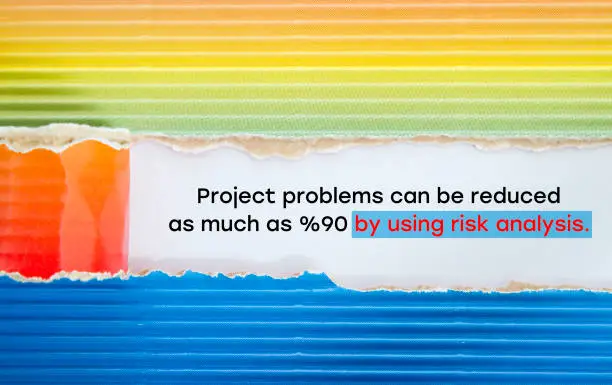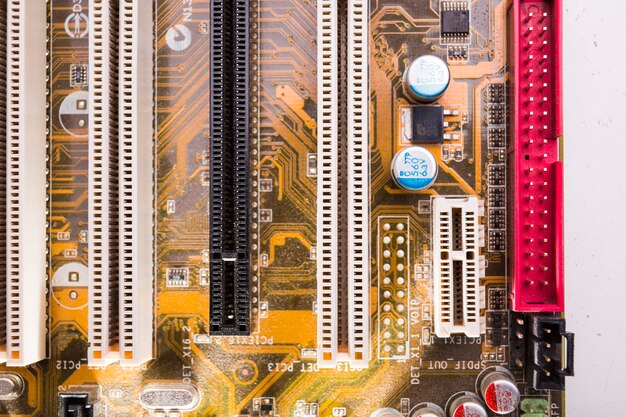BUSINESS
Unveiling the Ins and Outs of AIO-TLP Leaks and Their Implications
Published
6 months agoon
By
admin
AIO-TLP (All-In-One Transport Layer Protocol) leaks refer to the unintended disclosure of information through vulnerabilities in the protocol used for secure data transmission. TLP is designed to ensure the confidentiality, integrity, and availability of data during transfer. However, like any technology, it can be susceptible to flaws that cybercriminals exploit.
What is AIO-TLP?
AIO-TLP stands for All-In-One Transport Layer Protocol. It is an advanced version of traditional transport layer protocols that combines multiple functionalities, such as encryption, authentication, and integrity checks, into a single framework. This protocol is widely used in securing communications over the internet, particularly in scenarios where data sensitivity is paramount.
How Do AIO-TLP Leaks Occur?
AIO-TLP leaks can occur due to several reasons, including:
Software Vulnerabilities: Bugs in the software implementation of the protocol can be exploited to gain unauthorized access to data.
Misconfigurations: Incorrect setup of the protocol can leave gaps that attackers can exploit.
Man-in-the-Middle Attacks: Cybercriminals intercept data during transmission by exploiting weaknesses in the protocol.
Phishing and Social Engineering: Users can be tricked into divulging information that can be used to exploit AIO-TLP vulnerabilities.
The Impact of AIO-TLP Leaks
The ramifications of AIO-TLP leaks can be severe, affecting individuals, organizations, and even governments. Here are some potential impacts:
Financial Loss
Data breaches resulting from AIO-TLP leaks can lead to significant financial losses. Cybercriminals can steal sensitive information such as credit card details, leading to unauthorized transactions and fraud.
Reputational Damage
Organizations suffering from AIO-TLP leaks can experience substantial damage to their reputation. Trust is a critical asset, and losing it can result in customer attrition and loss of business opportunities.
Legal Consequences
Data protection regulations such as GDPR impose strict penalties for data breaches. Organizations found to be negligent in protecting data can face hefty fines and legal actions.
Operational Disruption
AIO-TLP leaks can lead to operational disruptions as organizations scramble to contain the breach, assess the damage, and implement remediation measures. This can result in downtime and loss of productivity.
Case Study: Thejavasea.me Leaks
Thejavasea.me leaks brought AIO-TLP vulnerabilities into the spotlight. This incident involved the unauthorized disclosure of sensitive data, raising concerns about the security of transport layer protocols. By examining this case, we can glean valuable insights into the nature of such leaks and the steps required to mitigate them.
What Happened?
In the case of thejavasea.me, attackers exploited vulnerabilities in the AIO-TLP implementation, gaining access to confidential data. The breach involved the interception of data during transmission, highlighting the risks associated with inadequate security measures.
Lessons Learned
Robust Implementation: Ensuring that the AIO-TLP implementation is robust and free of vulnerabilities is paramount.
Regular Audits: Conducting regular security audits can help identify and rectify potential weaknesses in the protocol.
User Education: Educating users about phishing and social engineering tactics can prevent them from falling prey to such attacks.
Incident Response: Having a well-defined incident response plan can mitigate the damage caused by data breaches.
Mitigating AIO-TLP Leaks
Preventing AIO-TLP leaks requires a multi-faceted approach. Here are some strategies to enhance the security of transport layer protocols:
Secure Development Practices
Adopting secure coding practices during the development of AIO-TLP implementations can prevent vulnerabilities from being introduced. This includes regular code reviews, static analysis, and adherence to security guidelines.
Configuration Management
Proper configuration management ensures that the protocol is set up correctly and securely. This includes disabling unnecessary features, using strong encryption algorithms, and regularly updating configurations.
Monitoring and Detection
Implementing robust monitoring and detection mechanisms can help identify and respond to potential threats in real time. Intrusion detection systems (IDS) and security information and event management (SIEM) tools are essential components of this strategy.
User Training
Educating users about the risks associated with AIO-TLP leaks and how to recognize phishing and social engineering attempts can significantly reduce the likelihood of successful attacks.
Regular Updates and Patching
Keeping software up to date with the latest patches and updates is critical in mitigating vulnerabilities. Organizations should establish a regular update schedule and promptly apply security patches.
Future of AIO-TLP
As technology continues to evolve, so too will the methods used by cybercriminals to exploit vulnerabilities. The future of AIO-TLP will likely involve:
Enhanced Encryption Techniques
Developing more advanced encryption techniques to further secure data during transmission will be a priority. This includes the use of quantum-resistant algorithms.
AI and Machine Learning
AI and machine learning can play a significant role in identifying and mitigating potential threats. These technologies can analyze patterns and detect anomalies that may indicate a breach.
Improved Protocol Standards
The development of improved protocol standards that incorporate the latest security best practices will help mitigate the risks associated with AIO-TLP leaks.
Conclusion
AIO-TLP leaks pose a significant threat to cybersecurity, with potential impacts ranging from financial loss to reputational damage. By understanding the nature of these leaks, examining case studies like thejavasea.me leaks, and implementing robust security measures, organizations can effectively mitigate the risks. As technology evolves, staying ahead of emerging threats will be crucial in ensuring the continued security of data during transmission.
7 Frequently Asked Questions About AIO-TLP Leaks
1. What is AIO-TLP?
AIO-TLP (All-In-One Transport Layer Protocol) is an advanced protocol designed to secure data transmission by combining encryption, authentication, and integrity checks into a single framework.
2. How do AIO-TLP leaks occur?
AIO-TLP leaks can occur due to software vulnerabilities, misconfigurations, man-in-the-middle attacks, and phishing or social engineering tactics.
3. What are the potential impacts of AIO-TLP leaks?
The potential impacts include financial loss, reputational damage, legal consequences, and operational disruptions.
4. How can organizations mitigate AIO-TLP leaks?
Organizations can mitigate AIO-TLP leaks by adopting secure development practices, proper configuration management, robust monitoring and detection, user training, and regular updates and patching.
5. What lessons were learned from thejavasea.me leaks?
Key lessons include the importance of robust implementation, regular security audits, user education, and having a well-defined incident response plan.
6. What future developments can we expect for AIO-TLP?
Future developments may include enhanced encryption techniques, the use of AI and machine learning for threat detection, and improved protocol standards.
7. How important is user education in preventing AIO-TLP leaks?
User education is crucial as it helps prevent phishing and social engineering attacks, which are common methods used to exploit AIO-TLP vulnerabilities. Educated users are less likely to fall prey to such attacks, thereby enhancing overall security.

Love2Love.lv – Meaningful Matches Online | Your Trusted Dating Platform

Discover Candizi – Flavor-Packed Candy Bliss

Top Stock Picks Daily | 5StarStocks.com Market Insights

Numberlina – Fun Math Games for Kids & Learning Tools

How to Track WhatsApp Activity – Earn Tuffer (2025 Guide)
6463276197 Explained: Understanding Its Significance
Understanding the Features and Benefits of amzp22x

WellHealth: Top 5 Science-Backed Muscle Building Tips
Wildest Influencer Fails & Viral Moments Exposed InfluencersGoneWild

Bumped Things NYT Crossword Answer & Clues Explained

People’s Top Celebrity Stories of 2025: The Biggest Headlines

Discover Candizi – Flavor-Packed Candy Bliss

Love2Love.lv – Meaningful Matches Online | Your Trusted Dating Platform
6463276197 Explained: Understanding Its Significance

Top Stock Picks Daily | 5StarStocks.com Market Insights

Fixing Jacksonville Computer Network Issues Fast
Understanding the Features and Benefits of amzp22x

How to Track WhatsApp Activity – Earn Tuffer (2025 Guide)

WellHealth: Top 5 Science-Backed Muscle Building Tips
Wildest Influencer Fails & Viral Moments Exposed InfluencersGoneWild

Love2Love.lv – Meaningful Matches Online | Your Trusted Dating Platform

Discover Candizi – Flavor-Packed Candy Bliss

Top Stock Picks Daily | 5StarStocks.com Market Insights

Numberlina – Fun Math Games for Kids & Learning Tools

How to Track WhatsApp Activity – Earn Tuffer (2025 Guide)
6463276197 Explained: Understanding Its Significance
Understanding the Features and Benefits of amzp22x

WellHealth: Top 5 Science-Backed Muscle Building Tips
Wildest Influencer Fails & Viral Moments Exposed InfluencersGoneWild

Bumped Things NYT Crossword Answer & Clues Explained
Categories
Trending
-

 Uncategorized2 months ago
Uncategorized2 months agoTop 10 Cloud Computing Platforms
-

 Uncategorized6 months ago
Uncategorized6 months agoExploring JUQ-722 Sub Indo: A Detailed Insight into Popular Subtitled Content
-

 Uncategorized3 months ago
Uncategorized3 months ago5 Essential BIOS PS2 Configuration Techniques
-

 Uncategorized4 weeks ago
Uncategorized4 weeks agoPeople’s Top Celebrity Stories of 2025: The Biggest Headlines
